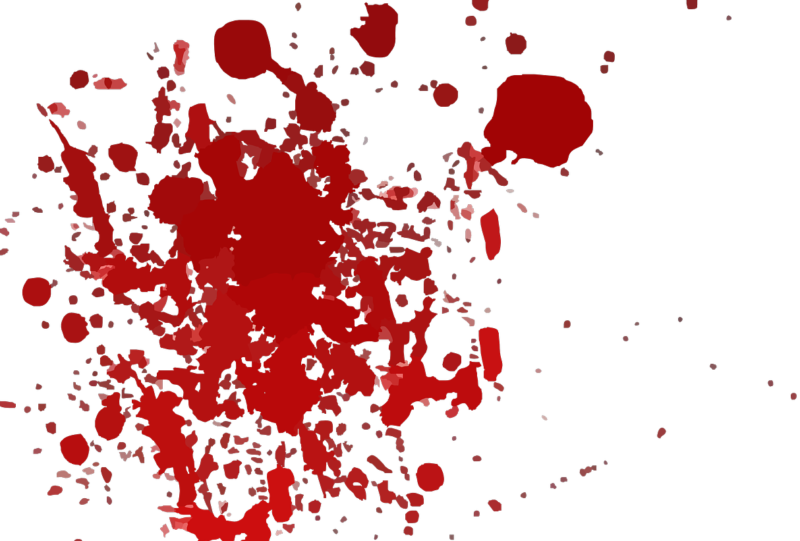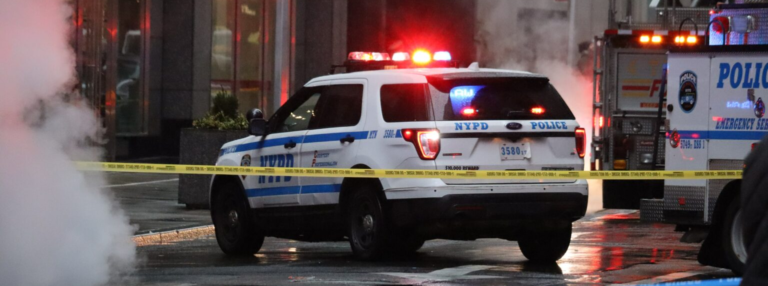Bloodstain Pattern Analysis: Decoding the Secrets of Crime Scenes
Unraveling the mysteries hidden within bloodstains is a crucial aspect of crime scene investigation. In this context, we will talk about the significance of bloodstain pattern analysis and decoding the secrets it holds.
Aspiring crime scene investigators must master the techniques of bloodstain pattern analysis to reconstruct crime scenes, identify key evidence, and bring justice to those affected.
The Science Behind Bloodstain Pattern Analysis
Bloodstain pattern analysis is a scientific discipline that examines the characteristics and distribution of bloodstains left at crime scenes. Moreover, understanding the physics behind bloodstain formation and interpreting patterns can provide crucial insights into the events that occurred.
Additionally, the analysis involves examining the size, shape, and distribution of stains to determine the angle and velocity at which they were produced.
Types of Bloodstain Pattern Analysis
Bloodstain patterns in forensic science are categorized into several types based on their appearance and characteristics. These patterns can provide valuable insights into a crime scene and help investigators reconstruct events. The main types of bloodstain patterns include:
Bloodstain Pattern Analysis: Passive Stains
- Drops: Circular stains produced by the force of gravity acting alone.
- Drips: Bloodstains formed when blood falls in a straight line due to gravity.
- Flow Patterns: Bloodstains created by the movement of liquid blood.
- Pooling: Accumulation of blood in a specific area due to gravity.
Bloodstain Pattern Analysis: Transfer Stains
- Contact Stains: Blood is transferred from one surface to another through direct contact.
- Swipe Stains: Blood is transferred from one surface to another by a lateral motion.
- Wipe Stains: Blood is transferred from one surface to another with a wiping or smearing motion.
Bloodstain Pattern Analysis: Projected Stains
- Arterial Spurts/Gushes: Bloodstains are produced when an artery is punctured, resulting in a rhythmic, spurting pattern.
- Cast-off Stains: Blood is thrown from a bloody object in motion onto a surface.
- Expirated Blood: Bloodstains created by blood forced by airflow out of the nose, mouth, or wound.
Bloodstain Pattern Analysis: Impact Spatter
- Low Velocity: Large, distinct blood droplets formed by low-velocity impact or force.
- Medium Velocity: Medium-sized spatter droplets produced by moderate force.
- High Velocity: Fine mist-like bloodstains generated by high-velocity impact, such as gunshot wounds.
Bloodstain Pattern Analysis: Void Patterns
- Void Patterns: Absence of bloodstains in a particular area where an object or person blocked the path of blood.
Miscellaneous Patterns
- Satellite Spatter: Smaller bloodstains that are separate from the main impact spatter.
- Expirated Cast-off: Blood droplets created by exhaling blood.
- Skeletonization: Process where the outer edges of a bloodstain dry, forming a rigid, darker perimeter.
Bloodstain Pattern Analysis: Altered Bloodstains
- Diluted Bloodstains: Bloodstains that have been diluted by water or another liquid.
- Washed Out Stains: Bloodstains that have been partially or completely washed away.
- Aged Bloodstains: Bloodstains that have undergone changes due to time, such as drying, flaking, or discoloration.
These different types of bloodstain patterns are carefully analyzed by forensic experts to determine factors like the direction of impact, the sequence of events, and the position of the victim and suspect. This analysis aids in reconstructing the crime scene and assisting in criminal investigations.
Bloodstain Pattern Analysis: Deciphering Crucial Crime Scene Clues
Interpreting bloodstains at a crime scene is a meticulous process that requires a keen eye for detail and a deep understanding of blood behavior. These patterns left behind can be instrumental in uncovering the sequence of events, the dynamics of an incident, and even the position of individuals involved. Let’s get into the fascinating world of bloodstain interpretation.
First and foremost, blood behaves differently depending on various factors, including the angle of impact, the velocity of the blood, and the surface it contacts. Moreover, the shape, size, and distribution of bloodstains can offer vital clues about the circumstances surrounding the crime.
In cases of physical altercations, the presence of impact patterns is crucial. For instance, low-velocity impact spatter typically produces larger, more distinct stains, while high-velocity impact generates fine, mist-like spatter. Additionally, the angle of impact can be determined by the oval shape of the bloodstain.
Furthermore, the analysis of bloodstains can help investigators establish the sequence of events. For example, if arterial spurts are present at the scene, it suggests that severe injury occurred before any attempts to clean up or alter the scene.
Additionally, bloodstains can indicate the positions of individuals involved. As an illustration, the direction and location of bloodstains on clothing or objects can help determine the relative positions of a victim, perpetrator, or bystander.
In recent years, advancements in technology have enhanced bloodstain analysis. For instance, specialized software and AI tools assist experts in analyzing complex patterns and making more accurate interpretations.
In conclusion, interpreting bloodstains at a crime scene is akin to deciphering a silent witness’s account of the events that unfolded. Therefore, it is imperative to approach bloodstain analysis with the utmost ethical considerations. Forensic experts must ensure that evidence is collected and interpreted without bias or coercion is essential for a fair investigation.

Limitations and Challenges
Bloodstain pattern analysis, is a vital component of forensic science, although it has limitations and challenges. Forensic experts grapple with a diverse array of complexities during bloodstain analysis. Understanding these challenges is paramount to ensure the precision and dependability of the results.
Challenges in Bloodstain Pattern Analysis
Environmental Factors: Bloodstain analysis is significantly impacted by environmental conditions. Weather elements like rain, wind, or extreme temperatures can modify the appearance and behavior of bloodstains, potentially compromising their reliability.
Surface Properties: The type of surface upon which bloodstains land profoundly influences their characteristics. Porous surfaces, like fabric or carpet, can absorb blood, resulting in subtle stains, whereas non-porous surfaces, such as glass or metal, tend to produce more defined stains.
Blood Aging and Drying: Blood undergoes transformations as it ages and dries, adding complexity to the analysis. Over time, the color, texture, and adhesion properties of bloodstains evolve, possibly challenging efforts to ascertain their origin or sequence.
Contamination Risk: The risk of contamination looms large and threatens the integrity of bloodstain evidence. Even minimal contact with external substances, such as cleaning agents or other bodily fluids, can alter the appearance and composition of bloodstains, leading to misinterpretation.
Multiple Blood Sources: Crime scenes involving multiple individuals pose challenges in distinguishing bloodstains from various sources. The presence of mixtures, blending blood from victims, suspects, or bystanders, can result in overlapping, or intertwined stains necessitating specialized analysis.
Lack of Standardization: Bloodstain analysis lacks a universally standardized protocol, contributing to potential discrepancies in interpretation. Varied methodologies employed by different experts can impact the reliability and consistency of results.
Human Error and Bias: Human error and biases, inherent in any forensic analysis, can introduce inaccuracies into bloodstain analysis. Subjectivity in interpreting patterns can yield differing conclusions among analysts.
Complexity of High-Velocity Events: High-velocity events, such as gunshot wounds or explosive incidents, generate intricate bloodstain patterns that demand specialized expertise. Analyzing spatter, cast-off, and impact patterns in these scenarios necessitates a deep understanding of physics and fluid dynamics.
Case Studies of Notable Bloodstain Pattern Analysis
Examining real-world criminal cases where bloodstain analysis played a pivotal role sheds light on the profound impact of this forensic technique. These cases demonstrate how bloodstain analysis has not only aided in solving crimes but also contributed to convictions, exonerations, and the revelation of crucial evidence.
Bloodstain Analysis in Iconic Criminal Cases
The O.J. Simpson Case is one of the most famous criminal trials in history where bloodstain analysis played a central role.
Notably, the bloodstains at the crime scene, in O.J. Simpson’s car, and on his clothing were examined in detail. These analyses revealed a complex web of evidence, but there was no conviction of O.J. Simpson. However, the bloodstain pattern analysis played a pivotal role in court and had a big impact on this case.
The case of the West Memphis Three is another example where bloodstain analysis played a pivotal role. During their trials, bloodstain analysis was used to link the defendants to the crime scene. However, advanced DNA testing later revealed that the blood evidence did not match any of the accused, leading to their exoneration after years of wrongful imprisonment.
Dennis Rader, the notorious “BTK Killer,” was captured due in part to bloodstain analysis. Upon his arrest, a DNA match from bloodstains at the crime scenes confirmed his identity. This vital evidence not only led to Rader’s conviction but also provided closure to the families of his victims.
In a case involving a nurse dubbed the “Angel of Death”, bloodstain analysis helped uncover a series of murders in a hospital.
Analyzing blood patterns on patients’ bed linens and the nurse’s clothing exposed the extent of the crimes. This analysis played a crucial role in securing a conviction and preventing further harm.
The case of Amanda Knox, accused of murder in Italy, saw bloodstain analysis at the forefront. Bloodstains in the victim’s room were meticulously examined, and the analysis revealed inconsistencies in the prosecution’s narrative. These findings contributed to Knox’s exoneration, highlighting the power of accurate bloodstain analysis in revealing the truth.
These case studies underscore the invaluable role of bloodstain analysis in criminal investigations. Whether confirming guilt, revealing innocence, or providing critical leads, bloodstain analysis continues to be a powerful tool in the pursuit of justice.
Conclusion
In the realm of crime scene investigations, the significance of bloodstain analysis cannot be overstated. It is a discipline that bridges the gap between science and justice. It offers invaluable insights into the events that transpired during acts of violence, chaos, or tragedy. Bloodstains can reveal the sequence of events, the dynamics of altercations, and even the identities of those involved.
Moreover, bloodstain Pattern analysis has played a pivotal role in some of the most high-profile criminal cases, leading to convictions, exonerations, and the discovery of crucial evidence. It has provided closure to grieving families, ensured that the guilty face consequences, and, perhaps most importantly, safeguarded the rights of the innocent.
Yet, amidst its power and potential, bloodstain analysis is not without its complexities, challenges, and limitations. Environmental factors, surface properties, contamination risks, and the absence of standardized protocols all underscore the need for detailed training, continuous research, and collaboration among experts.
Consequently, aspiring crime scene investigators must master the techniques, interpret patterns with precision, and leverage technology to ensure accurate and compelling evidence. By doing so, they contribute significantly to the pursuit of justice and bring comfort to victims and their families.
Thank you for reading this content and please leave any comments or questions. To read about the Dark World of Cybercrime Investigations, in my next article click here.
To read my comprehensive product reviews for 2023 visit my other website.
Willie McCain






